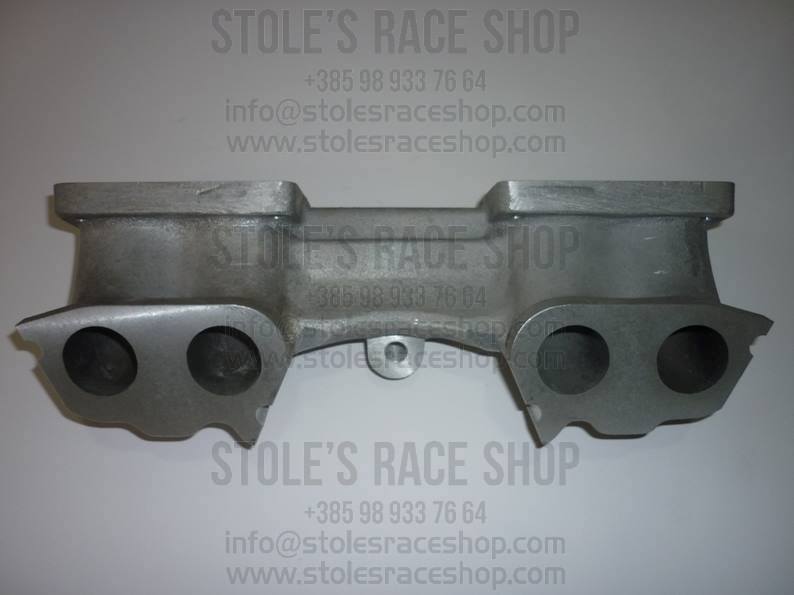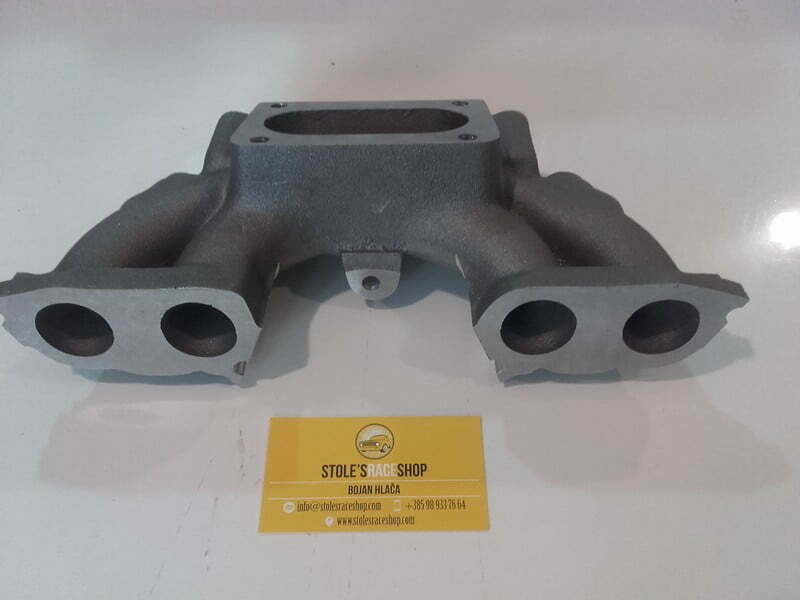Hey Steve! I currently have a phenolic 13mm spacer between the carb and manifold, would I see a benefit by increasing that thickness? If so, how thick?
It's not a new idea to run a spacer under a carb, it's very common practice on a V8 to increase plenum volume, it's also a way to blend the air flow from a round hole of a carb throat with a butterfly in it into the shape of the plenum opening.
I try and use the spacer to do both.
Air passing thru the venturi at high air speed has a lot of momentum, and even though it's light the air still has mass. As the air has passed thru the venturi it also becomes laden with droplets (hopefully very finely atomised ones) which have a greater mass. At high revs / high air speed a lot of the fuel droplets don't make the turn into the manifold runners and travels straight ahead and hits the floor of the plenum. Adding a spacer, and blending the spacer from two round holes into one oval shape helps to slow the air (and fuel droplets) down and more of them will make the turn.
This is not an uncommon tuning tool, there are plenty of high speed videos showing wet flow thru a manifold of a v8, the subsequent puddling of fuel at the plenum base, and small rivers of raw fuel running down the floor of the manifold runners and into the cylinder... sure out little sohc isnt a V8, but the air and fuel mix behaves in precisely the same way.
When I spent several saturday mornings on the dyno tuning my "stealth" 1500 (use the stock manifolds so visually the engine looked stock) one thing that showed up were AFR inconsistencies at high RPM... the AFR line would become really jagged (i.e. not a smooth curve) and simply wasn't consistent from one run to the next, leaning out or richening the mixture at WOT seemed to have little effect of the AFR's shown. My friend Darryl (who owns the dyno) suggested it may be fuel puddling and inconsistencies in fuel distribution. I came back the following weekend armed with a selection of spacers and the setup that made a real difference was a stack of OE type spacers, glued together with the holes blended into an oval shape at the manifold side, the AFR curve smoothed out and power picked up, jetting changes showed on the graph. The spacer in the end was over 2 inches thick with 6 x 10mm spacers glued together.
Will it have the same effect on your engine, maybe or maybe not... your spec is different to what mine was, there's a different compression ratio / different cam, different head, different exhaust ... a different engine.
Current spec is stock 1500 bottom end, 1300 head, 231 cam: Duration: 231 degrees duration (intake / exhaust) @ .050 lift
35-75 / 75-35 (seat-to-seat)
Lift: 10.33mm (.407") maximum lift
Lobe center: 112 degree, 34 DMTR-21 w/ vacuum advance...
odd that you've retarded the cam 2 degrees, a 35/75 set at split overlap would have the LCA's at 110. I've usually found 108 inlet works best with my go-to 40/80 grind, but again my headflow / compression ratio and cam choice is different to yours, so it's comparing an apple to an orange.
Also, separate question, what's the biggest you can bore the 1600 block? Is 87mm it?
I've never bored a late sohc block, so I'm not sure. Pistons for the closed deck engine come all the way to 87.4 (1mm over) but the head gaskets only have an 87.2 ID to the fire ring, as a general rule there is little to be gained by boring to the absolute threshold, you gain mere CC's per cylinder.
SteveC



